Rome vs. the Barbarians (Part 2)
by Nowick Gray
In Part 1 of Rome vs. the Barbarians, I introduce Thomas Mann’s little-known political essays from World War I Germany (Reflections of a Nonpolitical Man), painting the perennial battle not so much between West and East, or democracy and autocracy, but between progress and tradition, the future and the past, ideology and folk wisdom, and—most relevant for our own time—globalism versus local and national culture. In Part 2 I address the other prominent theme of Mann’s tome, the role of art and the artist in resisting the hegemony of politics.
Part 2: How to be Nonpolitical
Politics vs. Art
At the core, Mann’s Reflections of a Nonpolitical Man is a scathing critique of the political man, even or especially the radical, committed irrevocably to an ideological belief. In action within the political arena, the radical ideologue by definition resists compromise. In contrast stands the artist and the traditionalist, who but grudgingly bow to the democratic mass, in its turn pushed and pulled according to the whims of its masters of persuasion, carrots dangled from sticks.
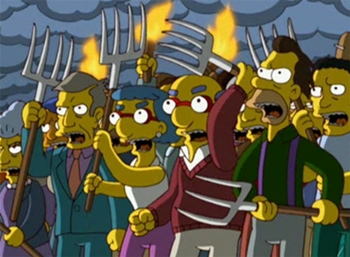 The artist is the culture hero, waging culture war against civilization itself—which implies the never-ending march of progress, equality, brotherhood, intellect… even “literature.” Against this tide stands the Luddite, the iconoclast, the conservative, the traditional tribe, the indigenous… the antivaxxer. And really, come to that, what better symbol and vanguard of the whole enterprise, than the point of that universal sword plunging home. Droit de seigneur, they call it in French. In plain English, Your Body, Our Choice: universal rape.
The artist is the culture hero, waging culture war against civilization itself—which implies the never-ending march of progress, equality, brotherhood, intellect… even “literature.” Against this tide stands the Luddite, the iconoclast, the conservative, the traditional tribe, the indigenous… the antivaxxer. And really, come to that, what better symbol and vanguard of the whole enterprise, than the point of that universal sword plunging home. Droit de seigneur, they call it in French. In plain English, Your Body, Our Choice: universal rape.
Satire, for its part in the struggle, banks on nihilism, or serves some program of allegiance. At best it mocks the spokesperson locked in earnestness, blind to the excess of pride in program. It becomes—like the voice calling for parentless children (“universal orphans”)—a more subtle irony, which escapes notice by either the powers that be or its critics, and passes for reality.
Therein lies irony’s true, artistic power: not simply to take a side in the permanent war, but to contain both sides, to hold the arena itself in regard, with each of its actors integral to the scene. The artist’s stance in such engaged observation, Mann reminds us, turns from mocking and self-assured, to “melancholy and modest” (476). Like the bodhisattva, he takes refuge in his daily practice, dedicated to the relief of suffering and the benefit of all, made possible by clear seeing and true speech, by uncensored depiction of people as they are, the world as it is—left and right contending, each principled in its own mind, each holding visions of tomorrow, or yesterday, or what needs to be addressed, close at hand.
‘No, true belief is no doctrine and no stubborn, rhetorical obstinacy. It is not the belief in some kinds of principles, words, and ideas such as freedom, equality, democracy, civilization, and progress. It is the belief in God. But what is God? Is He not the universal, the forming principle, omniscient justice, encompassing love? The belief in God is the belief in love, in life, in art.’ (418)
Mann unequivocally stakes his faith in art above all else. God is meaningless without the substance of creation: love, life, and art. And for the artist, art is the supreme calling, the medium through which the experience of love and life are rendered.
Against such an imperative, the heralds of a new world order or revolution of whatever epoch ring hollow. Substitute the paean below for any idealism today, whether of the WEF extreme or the Q-faithful.
[Walter Hasenclever, 1917]:
‘Palaces are trembling. Power is at an end.
Whoever was great, plunges in the abyss,
The gates crash shut.
He who had everything, has lost everything;
The slave by dint of his work
Is richer than he.
Follow me! I shall lead you.
The wind is rising from the ruins,
The new world is dawning. (440)
‘The people of the peace conference will “believe.” They will believe they have found, or are close to finding, the formula for the social organization of the human race, the formula of the human anthill, of the human beehive, the faultless formula that does justice to all, that they have been seeking for millennia. Liberté, égalité, fraternité ou la mort—and the brothers will cut off their brothers’ heads to establish brotherhood through “civic institutions.” The kingdom of God will appear on earth, justice, eternal peace and happiness in the form of the république démocratique, sociale et universelle. Thereupon the course of things will take a turn that will scarcely come up to the great expectations; and not just for external reasons will the momentarily raised idols fall, but especially because of their inner bankruptcy they always bore within themselves.’
Either side, in this opaque mirror, fails to see through to the other side, to its opposite utopia. Are two utopias possible when each by definition is dystopian to the other? Certainly not; in the wake of each coup and countercoup comes the guillotine.

The reconciliation of opposites is hardly possible in politics, whether of the cutthroat variety or in backroom diplomacy. It may be possible in the passive sense of a divine or spiritual overview (here Dostoyevsky is held as a shining example); while the artist (again like the Russian master) demands of oneself more initiative, a constructive concern, whereby the unavoidable human division may only be resolved in the all-consuming, all-surrendering crucible of art.
‘I hate politics and the belief in politics because it makes one arrogant, doctrinaire, stubborn, and inhuman. I… do not believe that the human race is destined for “happiness,” or even that it wants happiness—do not believe in “belief,” but rather more in despair, because it is despair that frees the path to salvation; I believe in humility and work—work on oneself, which, in its highest and most moral, its strictest and most cheerful form, seems to me to be art.’ (441)
The stance to contain and hold both sides is the special role of irony. Humble in its workshop of self, art deigns not to champion one cause or another, but to shine the light of the world through it, a holographic lens built to assist our closer inspection.
‘Irony as modesty, as skepticism turned backward, is a form of morality, is personal ethics, is “domestic policy.” But all politics, in the civic sense as well as in the sense of the intellectual man of action, of the activist, is foreign policy. Let us skip over everything that can make an artist into a nonpolitician, into an impossible politician. There is the considerations that no definite governmental form is a life-necessity and a sine qua non for art, but that it has blossomed under the most varied of earthly conditions. There is, precisely in the artist, an innate horror of shoddy work, the reluctance to tamper in a dilettante way with obviously difficult and complicated situations. There is the fact that the artist’s work, the highest, most subtle, most responsible and consuming work there is, will scarcely leave him the exuberance to play the political complainer.’ (478-79)
Fair enough; though if we substitute critique for complaint, the ironic enterprise of art might be cast in a more favorable light, as an exercise of conscience and conscientious morality, to paint the world’s conflicted tendencies in an exemplary descriptive, if not prescriptive way.

The merely civic-minded artist (Mann goes on to detail),
‘An artist who is so at peace with his conscience, so lacking in all irony, so much at harmony with his humanity, so virilely satisfied with his work, all in all so civically solid that he would find the gait with which the ordinary citizen, sure of his cause, strides to the ballot box to exercise his right to vote, perhaps the new Prussian right—such an artist is hard to imagine.’ (479)
There can be a political component to one’s art. The mistake is to identify with the cause, and thus to lose the anchor of the artistic soul. The artist, being true to oneself, like Mann’s fictional avatar Hanno Buddenbrooks,
‘recognizes himself as a nervous exception. That is his pride and his modesty, and it is, it seems to me, the pride and the modesty of the artist before life. It is basically disloyal to use art’s criticism of life for ameliorative propaganda purposes; neither [Hanno’s] school nor life in general can be arranged so that the highest moral and aesthetic sensitivity, that sensitivity and intellect, can feel at home in them. Nevertheless, such a critique may cause ameliorative effects in the real world—political effects, that is—because the sensitive exception, even though he cannot be politically authoritative, still expresses the conscience of the human race. He is, in a higher, more tender, aesthetically moral sense, even against, and precisely against, his will, its suffering leader—so that in fact, artistic criticism of life has improving, ennobling, moralizing, beneficial effects. But this is something else, a separate situation, and must in no way mislead us to define art—because it can have political consequences—as a political instrument, or to want to make the artist into a politician. An artist who misunderstood his special and ironic type of leadership in such a way that he understood it to be directly political and began to act accordingly would fall victim to self-righteousness and moral security, to an insufferable pose of virtue—the result would be the emergence of a philistinism of respectability and a schoolmasterly attitude toward the people that would doubtlessly be followed directly by artistic ruin—and not necessarily followed.’ (478)
The artist foresees what the activist intellectual does not: the unintended consequences of action; the harm to one’s own integrity as a more circumspect conscience; and the harm to others on the opposing side of one’s crusade.
‘The intellectual who becomes convinced he must act is immediately at the point of political murder—or, if not this, then the morality of his action is always such that political murder would be the consequence of his way of acting.… The intellectual who is carried by his passion into reality enters an element that is wrong for him, in which he behaves badly, dilettantishly, and wretchedly, suffers human damage and must immediately cover himself in the melancholy martyrdom of moral self-sacrifice in order to stand up at all before himself and the world.’ (481)
Mann goes on to lampoon, in his subtle-objective, ironic fashion, the portrait of the “artist-activist” who, in his intellectual refuge of self-congratulation, “does not think of action at all—and indeed, characteristically, he thinks even less of it the greater the talent he enjoys” (482).
Political action, then, is fraught with un-artistic, contradictory results. For the true artist, it means abandonment of the dispassionate view of the whole, and of one’s own central work. Though advanced for the highest morality, it encounters either nullifying compromise in the political arena, or resistance to its own radical extremity. It implies continued engagement and social responsibilities for which the artistic temperament is ill-suited. And finally, if it pronounces its beliefs from a privileged ivory tower insulated from the very actions it demands, then it reeks of virtue signaling and hypocrisy.
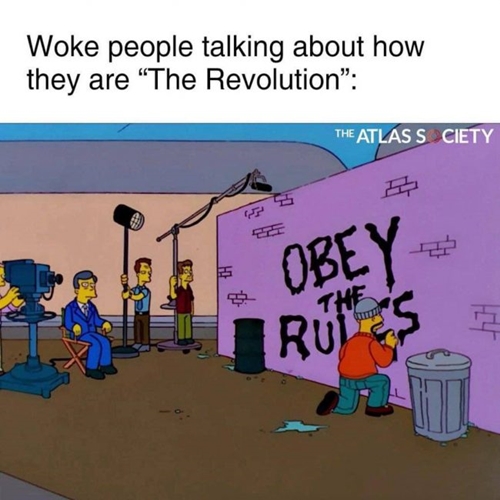
Progress vs. Tradition
The foundational issue of politics simmering below Mann’s prose is framed as “progress” versus “tradition.” In this regard it is a timeless duality, marking political strife throughout human history and indeed, culminating in the present day, as the forces of a technocratic future encroach upon the sanctity of the natural human body, seeking to overturn once and for all our innate health, natural immunity, with an intrusive synthetic replacement therapy that overwrites our Gaia-given operating system, but needs updating by subscription forevermore.
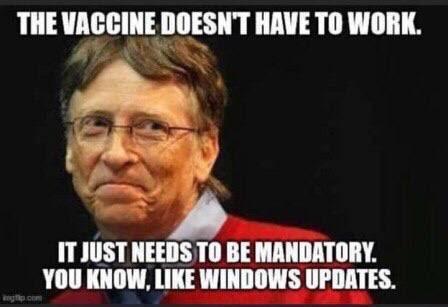
It is telling that a passage from earlier, Napoleonic times serves best to outline the issue at stake, across cultures and epochs and at every scale from tribe to global entity. Indeed the dynamism of this duality is intrinsic to that of life itself. Mann quotes Friedrich von Gentz:
‘The history of the world is a constant passage from the old to the new. In the continual cycle of things, everything destroys itself, and the fruit that has ripened separates itself from the plant that has produced it. But if this cycle is not to bring about the rapid decline of all existing things, therefore also everything that is just and good, then besides the large, and finally always overwhelming number of those working for the new [cf. the New Normal], there must also be a smaller number who defend the old with moderation and purpose and who try to keep the stream of the times, even if they cannot and do not want to stop it, within a regulated bed… I was always aware that in spite of all the majesty and the strength of my principles, and in spite of all the individualized victories that they achieved, the spirit of the times would finally be more powerful than we, that the press, no matter how much I despised it in its excesses, would not lose its terrible superiority over all our wisdom, and that art is just as little able to put a spike in the wheel of the world as is force. But this was no reason for me not to follow faithfully and patiently the task that had befallen me; only a bad soldier deserts his flag when fortune seems to be becoming unfavorable.’ (484)
The last comparison to a soldier is one that Mann elaborates on, to continue the thread of his defense, in this book, of the cultural preservation motive of German militarism. Both von Gentz’s and Mann’s use of the soldier motif recalls the Hindu classic, the Bhagavad-Gita. The dialog between the god Krishna and the reluctant solider Arjuna concludes with the injunction to keep up the good (metaphorical) fight, but without attachment to the fruits of that action; in allegiance foremost to one’s higher calling and inner duty.
Socio-historical interpretations aside, Mann’s association of art and war are, to my reading, characteristically ironic. He paints the arguments for war in the unflattering corner of one-sided, poetic infatuation; while throwing back critiques of the German nation in the laps of the war-mongering imperialist West (France and England). War in the last analysis can neither be championed nor condemned, in this artist’s view, for each side claims just cause; and in the case of WWI Germany, the more maligned side had greater cause for its self-defense, its defense of living culture against all-conquering Roman/Western “civilization.”
In the end the artist must remain true to the artistic vision of the world, which by its nature will have political content and consequences. In the youthful process of writing Tonio Kroger, for example, Mann remarks, “there was political will alive in me that I was unaware of, and here again we see that one does not have to play the political activist and demonstrant, that one can be an ‘aesthete’ and still have deep feeling for the political element” (488).
That deep feeling, as we have seen in these pages, extends back through the origins of the German nation, through Luther’s Reformation, into the embroiled contest of the Great War, and with chilling prescience, to the future of Europe in the first half of the twentieth century. Writing on the very day of the armistice between Germany and Russia, Mann opines:
‘And the war, if it continues, will continue against the West alone, against the “trois pays libres,” against “civilization,” “literature,” politics, the rhetorical bourgeois. The war continues, for this is no war. This is a historical period that may continue like the one from 1789 to 1815, or from 1618 to 1648. “And not before,” we read in the poem from Fraternal Strife in Hapsburg [Franz Grillparzer]:
‘And not before the grave has taken those now men,
And those now children have become then men,
Will the ferment stop what is now in the blood.’ (488)
In parting words, this nonpolitical man restates his antimanifesto: “that the human question is never, never to be solved politically, but only spiritually-morally.” Mann goes on to quote Christoph Martin Wieland [1733–1813], whose solidarity with the national impulse should resonate not only with Germans, but with citizens of every nation today under sustained assault from the totalitarian agenda of globalism.
‘[Wieland] said that the eternal refrain of all his political dreams was that if the human race was ever to improve, the reform had to begin not with forms of government and constitutions, but with the individual human being. He was also national when he burst out with the question: “What German in whose breast only a spark of national feeling glows can bear the thought that a foreign people would presume to force upon us at gunpoint a political delusion that is destructive of all our domestic and burgherly relations, and that they, just at the moment when they have nothing but human rights, freedom, equality, world citizenship, and universal brotherhood on their lips, should give us the disgusting choice of either becoming traitors to the laws of our fatherland, to our lawful rulers, and to ourselves and our children, or of letting ourselves be treated like the most depraved slaves?”’ (489)
Such a spirited defense of traditional, national culture is not to choose war or politics as a response, but to rouse the conscience of the artist, and of the citizen. Each must respond in accordance with their nature, their good sense, and the value they place on their natural and human heritage.
And yes, to fight back—not with rhetoric or force of arms, not with countermanifesto or revolutionary surrogate—but with individual integrity, spiritual strength and moral knowledge, artistic creativity, community resilience, loyalty to the land, and honor of vital culture. We do not have to choose a program to live by: but only to live by our innate instructions, without interference. Such is the call of freedom that any true artist or patriot will heed.
—
Now available in one volume, Nowick Gray’s collected essays from The New Agora, 2019-21.
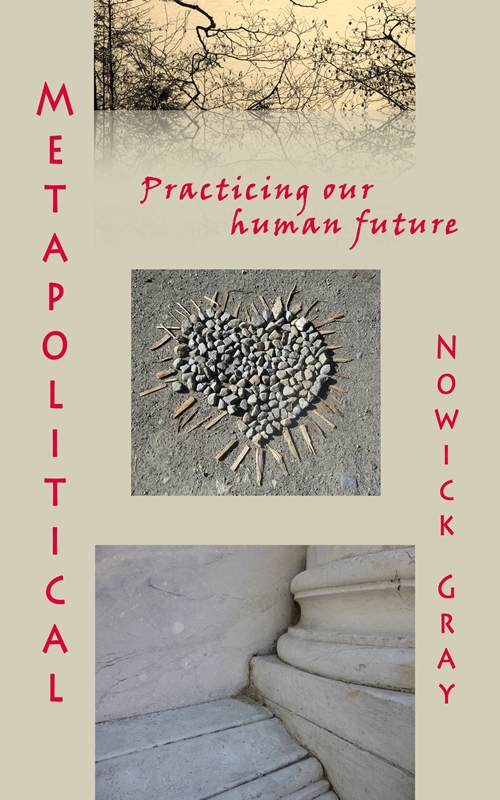 Metapolitical: Practicing Our Human Future, by Nowick Gray
Metapolitical: Practicing Our Human Future, by Nowick Gray
Facing an accelerating war on humanity, we break free of the narrative box of the old paradigm, and reject hierarchical power, for the sake of our sovereign human future.
Nowick Gray is a regular contributor to The New Agora and also offers perspectives and resources for alternative culture and African drumming. Subscribe to his Substack (New World Dreaming) or visit his writings website at NowickGray.com.
—
image credits:
(feature) police: myblog.ottawaarts.com
pitchforks: ZeroHedge
Mencken: plus.google.com
sheep: kitten corner
woke: Atlas Society
mandatory: chan4chan.com
—
– Come Like Us on Facebook – Check us out on Instagram –
– Sign Up for our Newsletter –



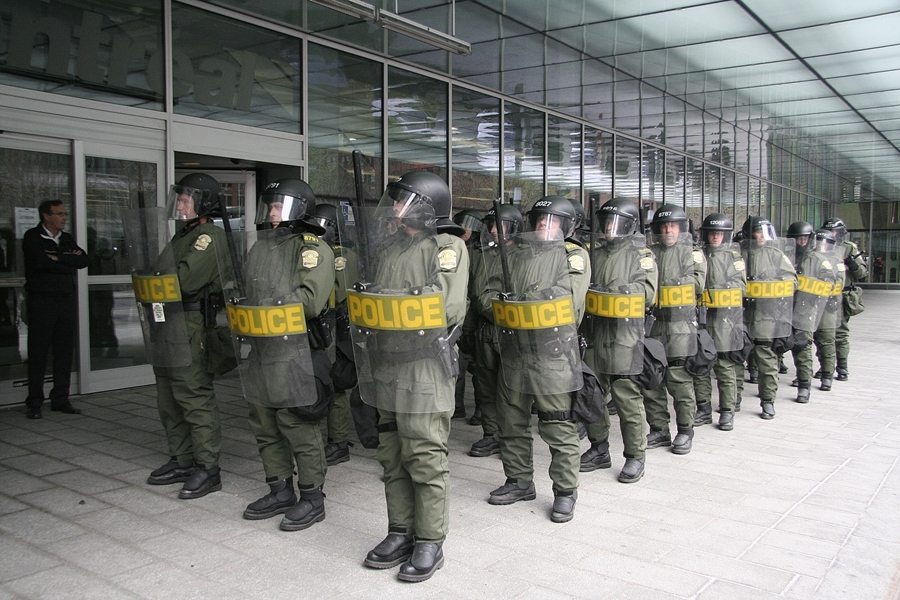
 nowickgray.com
nowickgray.com







